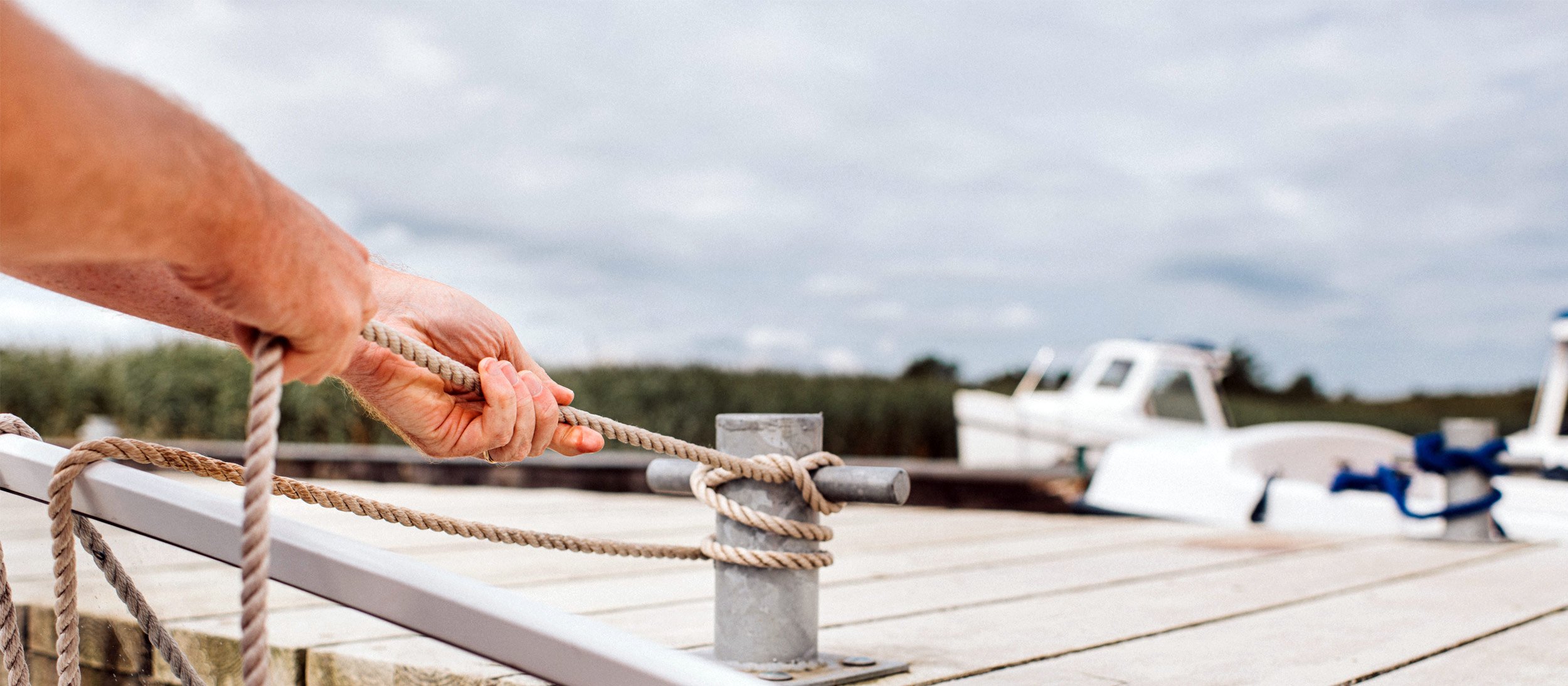Claim Center
We're in the business of helping people, providing prompt and personal claims service when you need us the most.
Call 877-242-2544 anytime, day or night, to report claims. You may also contact your independent agent to report a claim.
- Personal & Business ClaimsLearn More
- Life ClaimsLearn More
- Workers' Compensation ClaimsLearn More
Plan & Protect
Reduce risks and enjoy peace of mind with these tips and insights to protect what matters most.
Secure Your Watercraft Before the Storm

Have a plan to keep your boat safe before a hurricane.
For many, summer means time out on the open water on a boat or other watercraft. Summer also means Atlantic hurricane season, which begins June 1 and continues through November 30 each year. It's important to have a plan in place to secure your watercraft in the event of a hurricane heading your way. Check out these helpful tips for securing your watercraft in the water, on land, or if it's safe to do so, moving it to a safer location.
Securing your Boat in the Water
- Remove all portable equipment including canvas, sails, dinghies and motors as well as any valuables.
- Secure fenders and fender boards.
- Double all lines and equip them with chafing gear. Set crossing spring lines fore and aft for best protection. As a reminder, nylon lines will stretch. To best protect against tidal surge, be certain all lines are attached high on piling and install preventers at the top of the pilings to stop lines from slipping off the top.
- Assure batteries for automatic bilge pumps are fully charged and, if possible, install backup batteries.
- Turn off all electrical devices.
Securing your Boat on Land
- Secure the boat to the trailer with heavy-duty lines and tie the trailer off to a large, fixed object.
- Let some air out the trailer tires and put blocks around the wheels to help prevent the trailer from rolling.
- If possible, choose a storage area clear of trees and overhead wires.
Moving your Boat to a Safer Location on the Water
- Assure fuel tanks are full, fuel filters are clean, batteries are charged, bilges and cockpit drains are clear, and lifesaving equipment is placed in an accessible position.
- Remove all portable equipment including canvas, sails and dinghies, as well as any valuables.
- Set your boat’s anchors to minimize its ability to sway in a wide arc.
- If you decide to move your boat to waters outside the storm or hurricane threatened area, be sure to move well ahead of the storm and continually monitor weather forecasts. Ensure you have enough time to fuel and make the move safely.
This loss control information is advisory only. The author assumes no responsibility for management or control of loss control activities. Not all exposures are identified in this article. Contact your local, independent insurance agent for coverage advice and policy service.